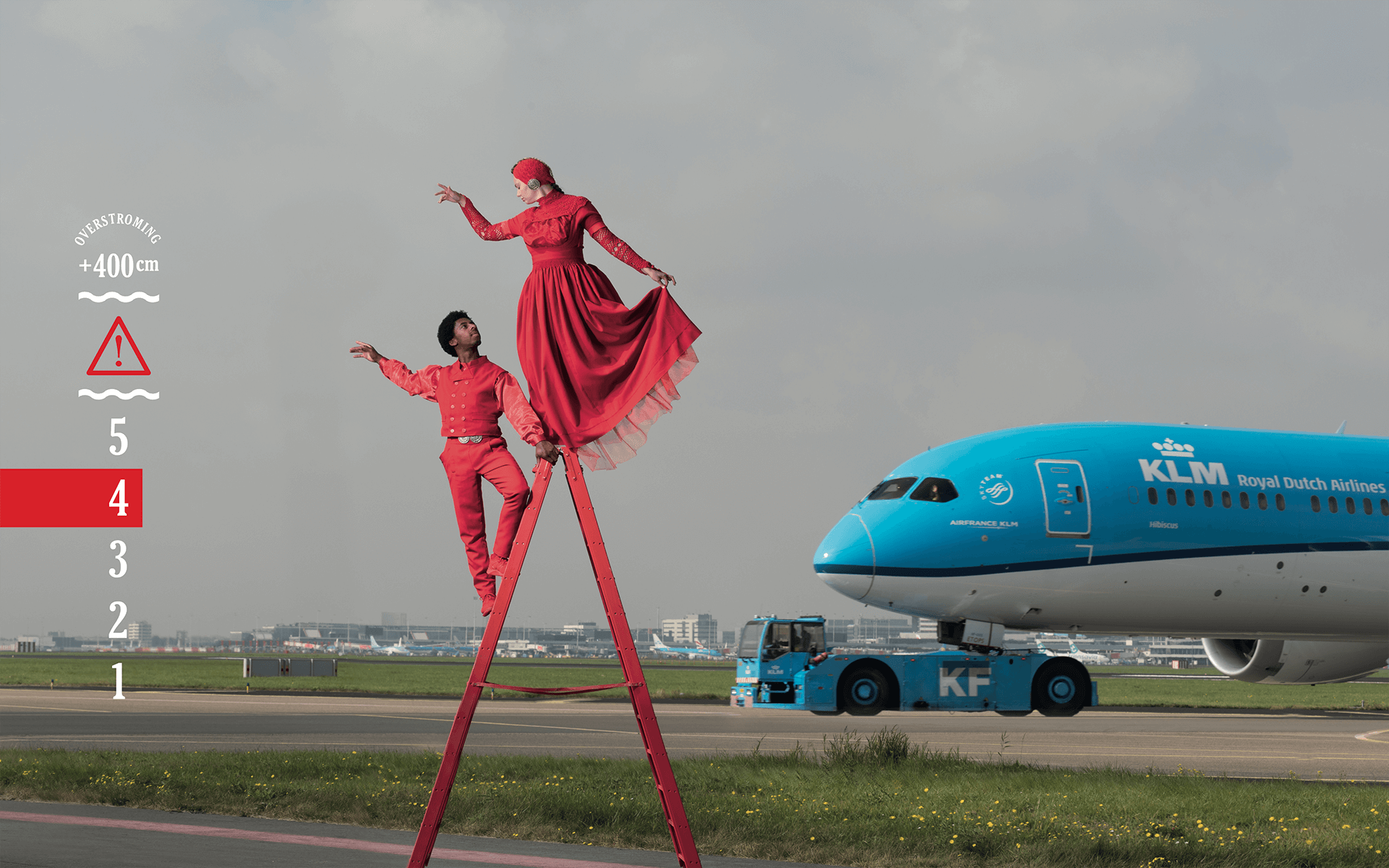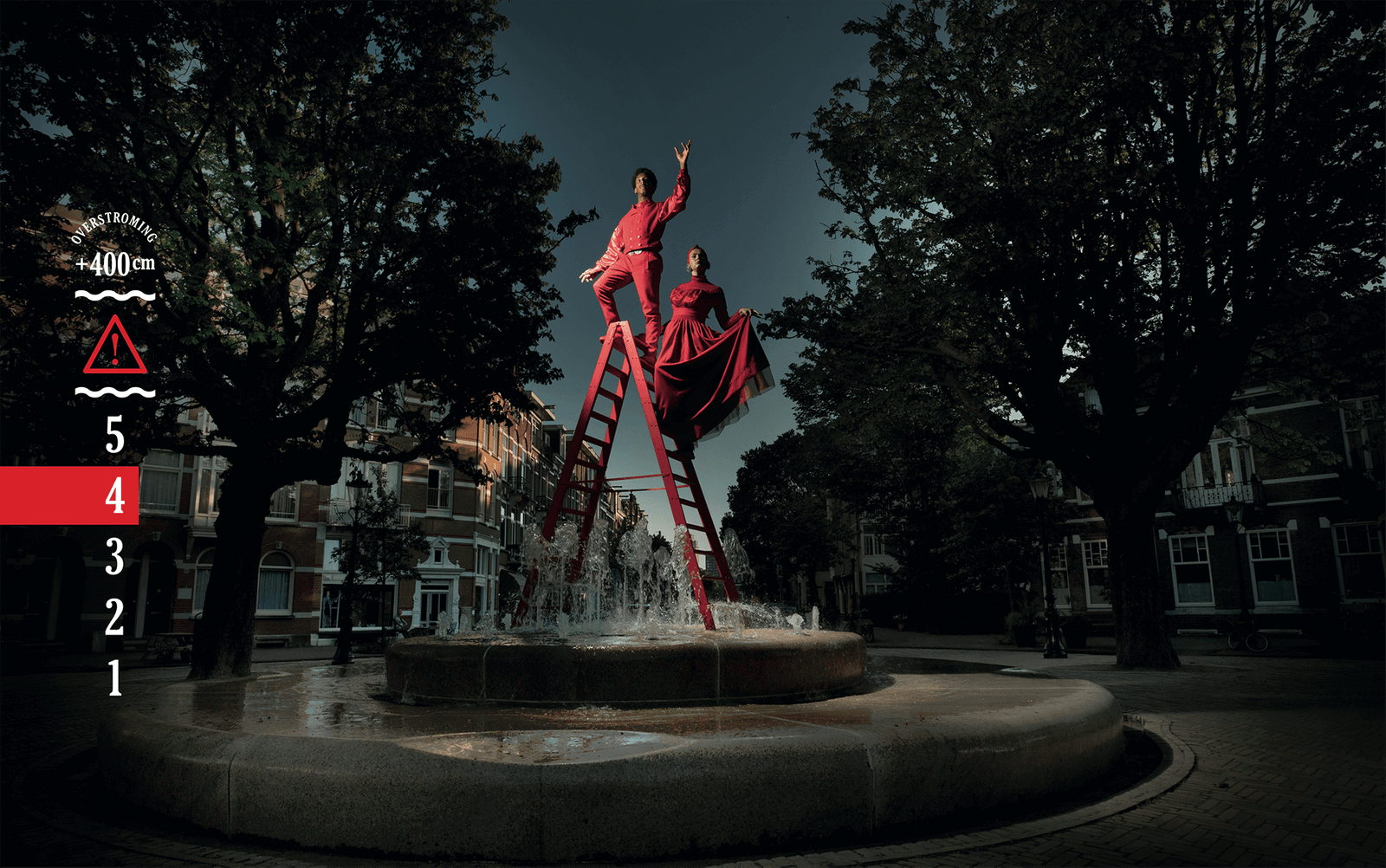Interview series 'The Challenges of Tomorrow'
Dutch visual artist Rem van den Bosch
Aggravated by climate change, there is a surge in sea level rise, floods, droughts and heat waves, and an increasing pressure on river deltas. This has major consequences in low-lying, deltaic countries such as the Netherlands.
Through a series of interviews, we find out about the challenges unique to the Netherlands, the government’s water management strategies and citizens’ responsibilities. This was prompted by the release of Delta Programme 2022 by Dutch Delta Commissioner Peter Glas last September.
Using the power of visual art Dutch artist Rem van den Bosch shows people the importance of respecting nature – like how models, as silent messengers of the water, showed the height of water during a breach of a dike and subsequent flooding, in one of his works.
In this interview, Rem van den Bosch talks about the importance of respecting nature, and the power of art in taking this message to the public.
With your work 'Here comes the Flood' you show the vulnerability of the Dutch delta. Why is that necessary?
We are extremely vulnerable, but hardly realise it. A third of the Netherlands lies below sea level. We are well protected by all the dikes, dams and dunes. The government has arranged things well for us, but what do we do if things go wrong and the tide comes in? How resilient are we?
These questions are urgent. Because the climate is changing and that causes rising sea levels and more peak showers, like last summer in Limburg where the rivers overflowed their banks.

The urgency is there, but the water awareness is lacking.
Yes, that is why I want to make people think about the consequences of climate change. By asking questions: How high is the water in your garden when the tide comes in? What would you be willing to do to keep your feet dry? Put more tax on raising the dikes or move to higher ground? And what measures are you taking to tackle climate change?
With the power of art and the magic of images, you can explain a complex story in an accessible way. The water boards are embracing my project, because it helps them bring water management to the attention of the public. Without their work, half of the Netherlands would be flooded.
What role does water play in your life?
I was born in a houseboat and now live in Ellewoutsdijk in the province of Zeeland, the heart of the Dutch delta. Maybe that is why I have developed a deep respect for the power of water. But I prefer to talk about the power of nature.
Nature offers us peace, inspiration and a refuge, but it is also under great pressure. We treat nature as if it were outside us, something we can exploit without limit, yet we are dependent on it. That worries me.
Do you mean that we do not live in complete harmony with our environment?
Yes, we have a lot to learn from indigenous communities in this regard. Their ecological knowledge is important in addressing climate change. After my studies, I spent time with the Haudenosaunee, the original inhabitants of America.

I visited schools in six different reserves and conducted 21 interviews with elders. The questions I asked came from Dutch school children. These conversations impressed me. Their respect for nature is enormous!
Every child grows vegetables in its own garden and they all know very well where the meat comes from. They learn that their actions have consequences for the next generations.
This is at odds with our Western perspective. We think in terms of government periods of a few years and generally consider economic gain as being more important than protecting nature.
I saw in practice how the indigenous community moves with nature rather than against it. Their motto is apt: "Treat the earth well. It was not given to you by your parents, it was loaned to you by your children."
How do you contribute to a liveable planet?
I want to protect nature. In my spare time, I go out and collect litter. For me, that is a way of connecting with nature and finding inspiration. About three times a week I collect litter, from packaging to mouthguards.
I usually take one bag to put the rubbish in. When it's full, I'm done. In other words, start with yourself and do what you can. Showing that you care for nature motivates others.
What role does visual art play in this?
I use visual art to formulate answers to social issues, in such a way that I touch people and get them to take action. I do this by appointment, in church or at school, but it also often happens on the street when passers-by see my work.
During the construction of the exhibition at the Watersnoodmuseum, a woman approached me. She told me an emotional story about her experience during the flood disaster of 1953. She was six years old when she was sitting with her bottom in the gutter and the water was running down her ankles. These chance conversations are what drive me to make visual art.

How do you reach the young generation?
In 'Here Comes the Flood', I connect generations by using traditional costumes, a modern expression and the statement that the flood will come. The traditional costume is different in every region of the Netherlands and creates recognition and curiosity, also with the younger generation.
I think it is important to talk to children about the rising sea level. Here in Zeeland, I take pupils to a residential area that lies six metres below sea level. When the model walks up the stairs and her hand indicates the height to which the water will rise when the place floods, she becomes silent, yet conveying the message.
Not for too long, because I don't want to scare them, but rather encourage them to be creative and come up with solutions. For example, they write a message on their arm with a detachable marker about what they stand for or what they think is important. Often, this is about loving animals or plastic waste in nature.

'Here Comes the Flood' is set in the Netherlands. There are many similar delta regions in the world. Do you have plans for exhibitions abroad?
The exhibition at the Watersnoodmuseum was followed by one in Amsterdam. The photos will hang large in the city for six months. All the inhabitants will see the impact of water! Hopefully this will be a springboard to other countries, because more and more organisations are recognising the influence of visual art.
I am already talking to organisations in the US. When it comes to water management, they all say: “The eyes of the world are on the Netherlands.” I would like to photograph in New York and New Orleans where the water comes high as a result of hurricanes. Or in Bangladesh, where resources are limited to protect against floods.
What is your passion besides your art?
Consumers are becoming increasingly aware that eating a lot of meat every day is not good for the climate. Its production causes a lot of CO2 emissions, and a lot of water and agricultural land is used. That is why I started looking for an alternative to meat.
I develop products based on Zeeland mussels. That is very sustainable. Mussels have a low ecological footprint, they purify the water and absorb carbon. The mussel burger will soon be available on supermarket shelves in the Netherlands.
I am concerned with the world, how people treat each other, but also how people treat animals. I think it is important that we reduce the consumption of meat. This is better for the climate and the environment.





